Study Variable Explorer
Overview
The purpose of the Study Variable Explorer is to allow you to search and compare phenotypic variables as well as tag them for future easier use.
The data is organized in a structure of studies that contain multiple datasets which in turn contain multiple variables.
You can start by:
- entering keywords to search for specific information
- entering the study, dataset or variable accession number.
Access the Study Variable Explorer
Choose Study Variable Explorer from the "Data" menu.
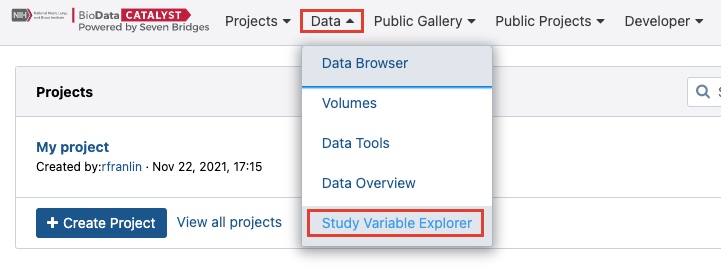
The Study Variable Explorer dashboard is displayed.
Dashboard
The following options are available in the Study Variable Explorer.

- Search - enter one or more keywords to start searching through the studies, datasets, and variables.
- Studies - click the tab to access all available studies; by default all available studies are shown and are narrowed down once you enter keywords.
- Datasets - same as above but for datasets.
- Variables - same as above but for variables.
- Search by Accession Number - use this option to look for the specific data based on the accession number .
- Results - the part of the page that displays results based on the entered keywords; click on the tabs to see the results by the categories: studies, datasets, and variables.
Searching for data
Enter one or more keywords and press enter. The search is applied to all studies, datasets, and variables that contain the keyword either in the name or the description. The found keywords are highlighted in the results section of the page.
In addition, the number of results is shown within the tabs as a number of the available studies, datasets, and variables for the specified keywords.

From this point you can either keep specifying keywords or exclude them by clicking x next to a keyword. Click Studies, Datasets or Variables tab to show the available results for each of the categories.
Searching by accession number
To perform a search by using the accession number:
- Click Search by Accession Number.
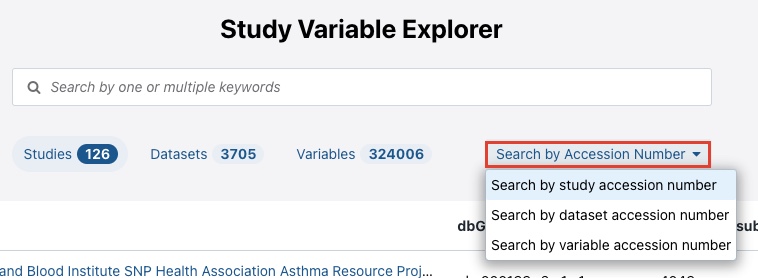
- Select the category of data you want to search.

- Enter the accession number.
- Select the study, dataset, or variable.
- Click Search.
Depending on the category of data you have entered the accession number for, the exploration mode for study, dataset or variable is displayed.
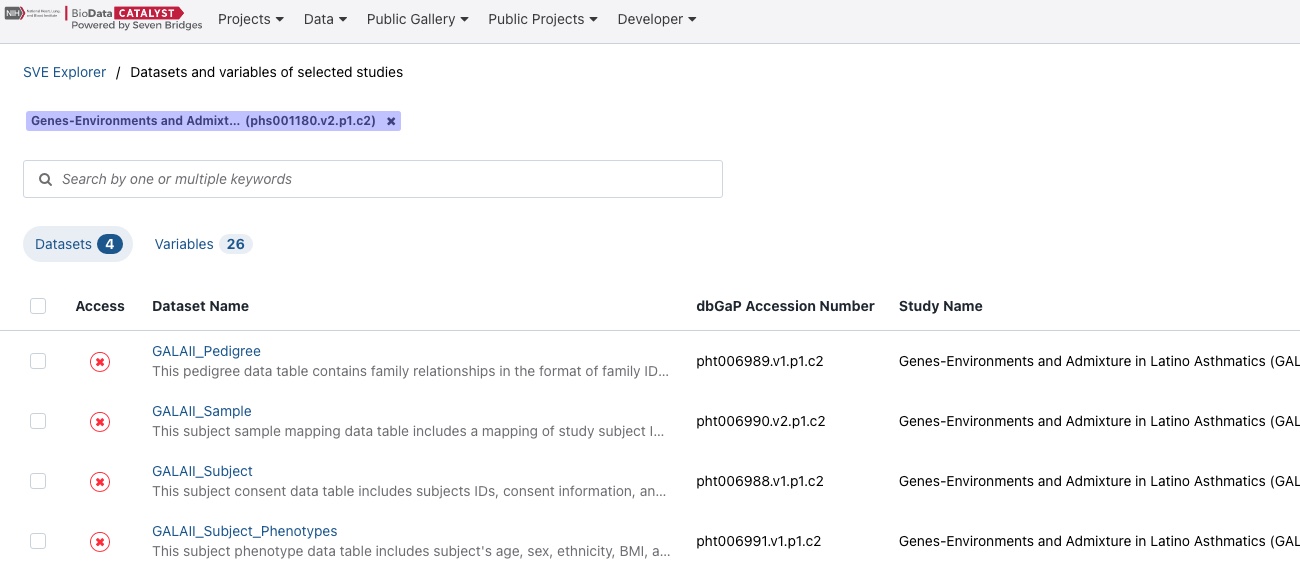
Exploring a study
After performing the search, all studies that contain the specified keywords are shown.

The following information and options are available:
- Access:
 - this icon denotes that you are allowed access to the study
- this icon denotes that you are allowed access to the study - this icon denotes that you currently do not have access to the study
- this icon denotes that you currently do not have access to the study
- Study Name - the name of the study which is also a link to accessing the study details page (see below)
- dbGap Accession Number - the Accession Number you can use to access resources within the Data Browser (see below)
- Number of subjects - the number of available subjects
Select a study and click See datasets and variables to start exploring it.
The study details page is displayed containing all datasets and variables that were found for the specified keywords.
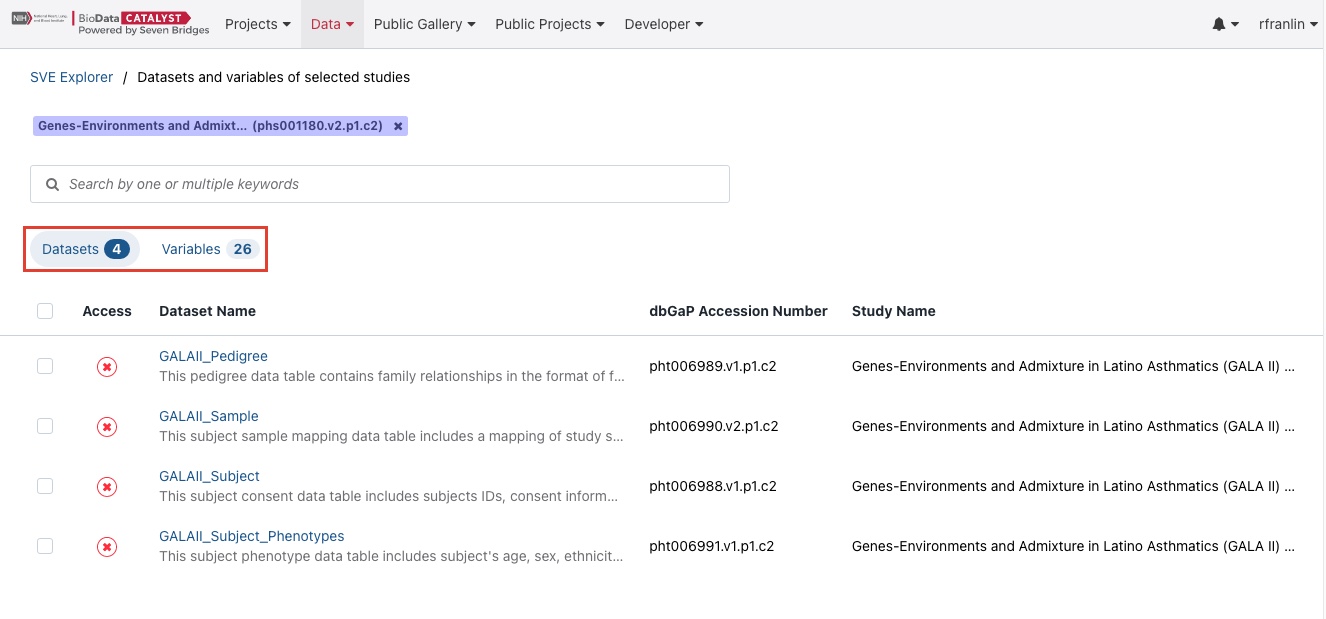
Here you can:
- Enter keywords to narrow down the results within this study.
- Click on a dataset name to access "Dataset details" page.
- Select a dataset and click See variables to access and compare all related variables (see below).
Comparing variables
To compare variables from a dataset:
- Select a dataset and click See variables.

All available variables from the selected dataset(s) is displayed.

- Select up to 4 variables you want to compare and click Add to comparison. The variables will be added to the comparison.
- (Optional) Use the drop-down menus at the bottom to change your selection.
- Click Compare.
The page with the detailed comparison information is displayed.
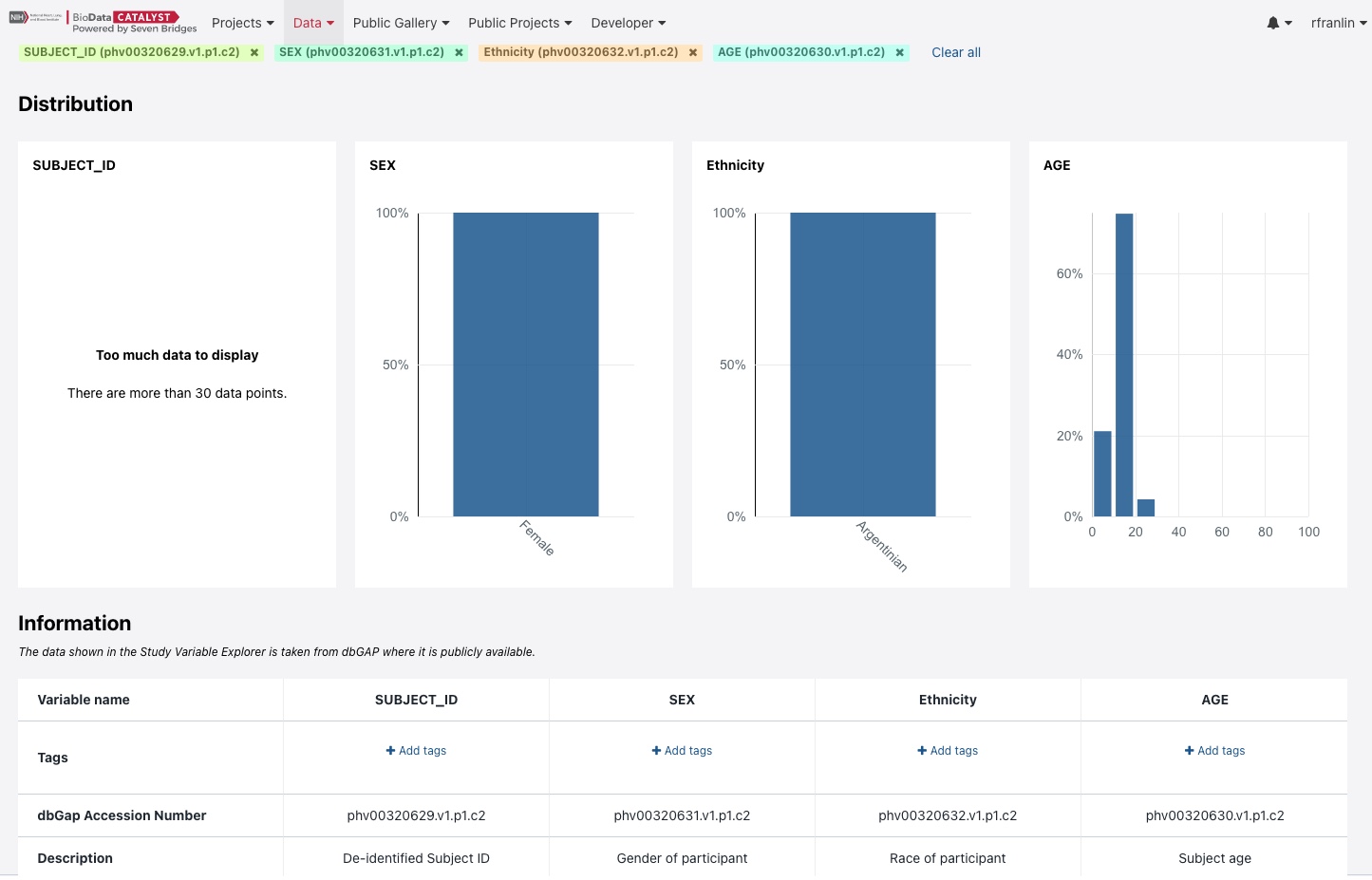
Tagging variables
The Platform allows you to tag variables with one or multiple tags. This can help you search and filter variables based on the specified tags.
You also have the option of removing the tags you no longer wish to use.
To add a tag to a variable:
- Select a variable or multiple variables.

- Click Tags in the upper right corner and select Add tags.
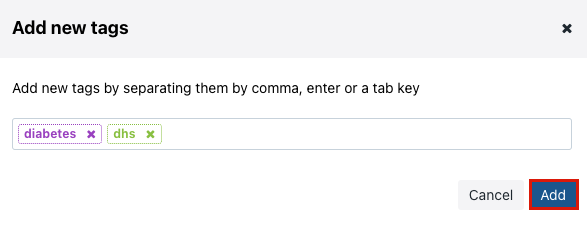
- Add a tag or multiple tags.
- Click Add.
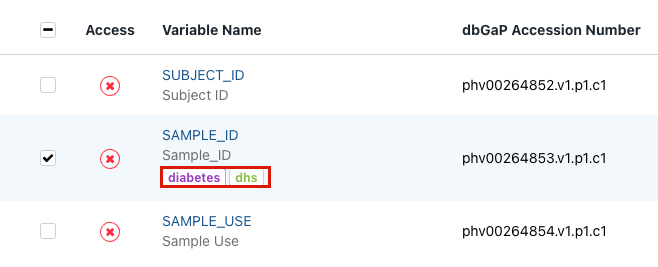
The tags are added to the variable.
Remove a tag
To remove a tag from a variable:
- Select a variable or multiple variables.
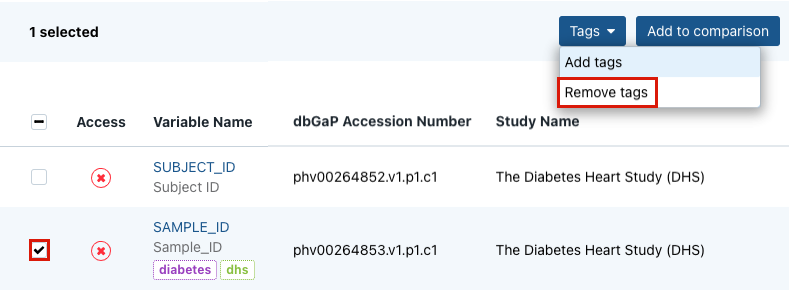
- Click Tags in the upper right corner and choose Remove tags.
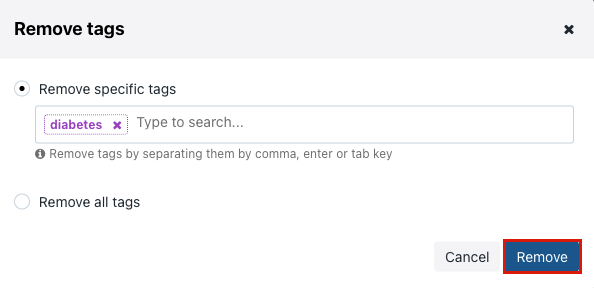
- Select if you want to remove specific tags (enter the tag you wish to remove).
- Or remove all tags from the variable.
- Click Remove.
The tags are removed from the variable.
Adding a note to a variable
To add a note to a variable:
- Click the name of the variable.
- Click Add note.
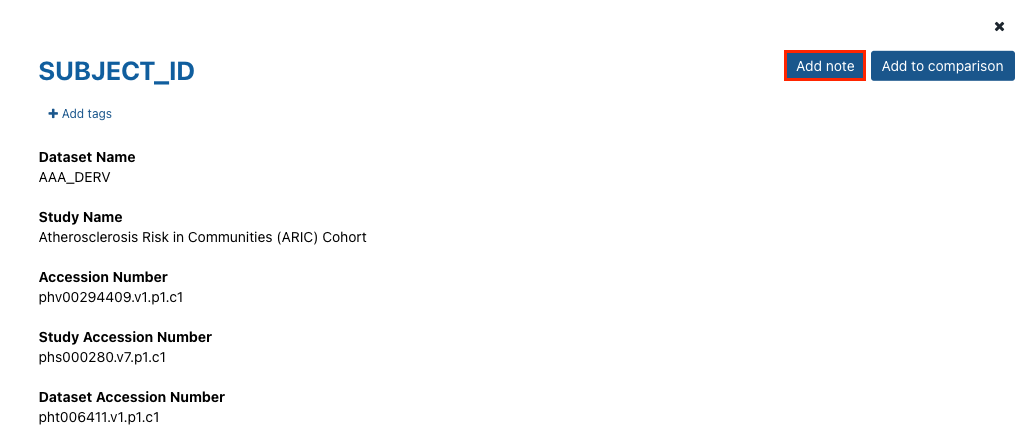
- Add your note for the variable. Markdown is supported.
- (Optional) Click Preview to see what your note will look like prior to saving it.
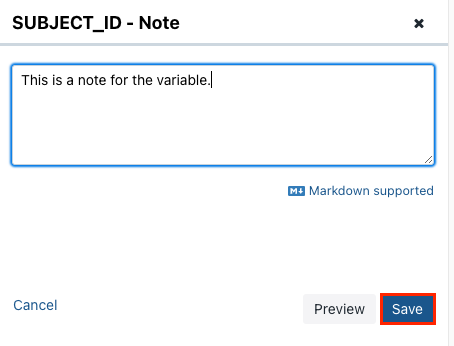
- Click Save to save your note.
Your note is added. To see the note, hover the note icon next to the variable name.

Edit or delete a variable note
To edit or delete a note:
- Click the name of the variable.
- Click View and edit note.
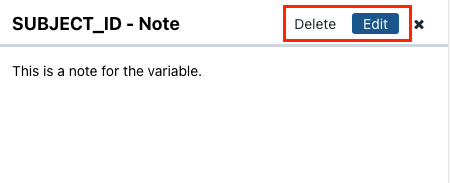
- Click Edit to change the note.
- Or click Delete to delete it.
Exporting information about variables
The Platform allows you to export information about variables. The information is exported as a JSON file which contains the following:
- Variable name
- Dataset name
- Dataset accession number
- Study name
- Study accession number
- Tags
- Notes
You have the option of choosing the destination project and folder for the exported variables. In addition, you can create a new destination project or folder during the export.
To export information about variables:
- Select a variable or multiple variables.
- Click Export variables info.
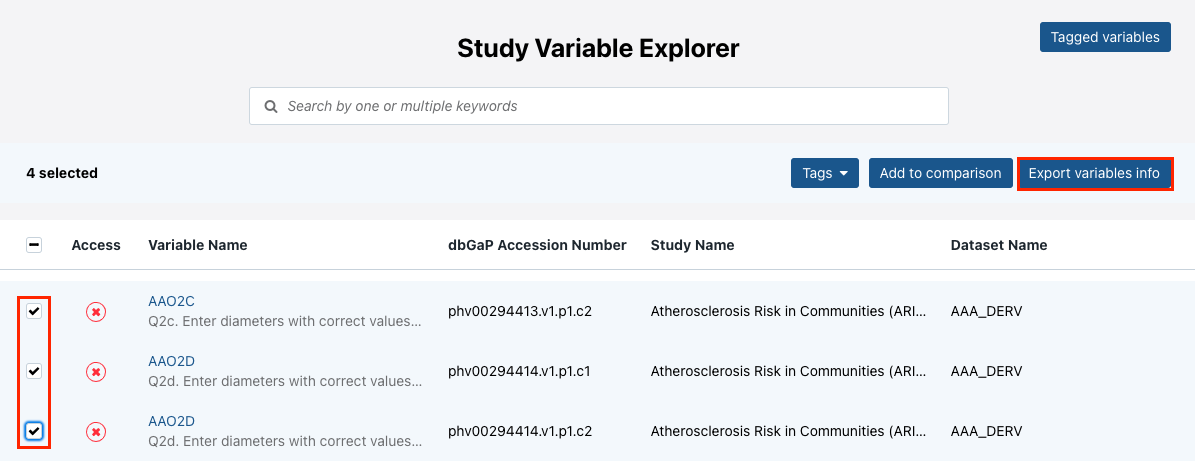
The dialog for choosing destination project and folder is displayed.
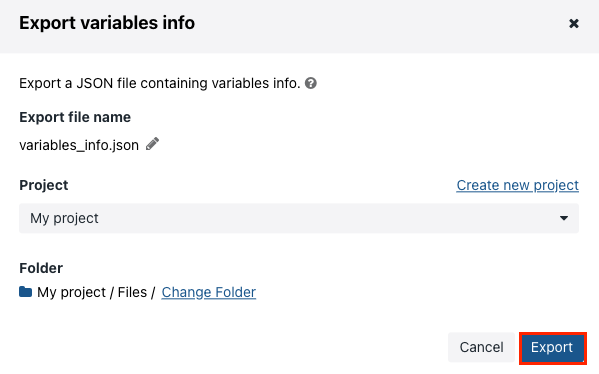
- Choose the destination project
4 (Optional) Click Create new project to create a new destination project. - (Optional) Click Change folder to specify a different folder or access the option for creating a new one.
- Click Export.
The information about the variables is exported to the specified destination folder and project.
Accessing related files in the Data Browser
Once you have found relevant information using the Study Variable Explorer, e.g. variables, you can use the accompanying dataset accession number to locate the related files using the Data Browser.
Follow these steps:
- Choose Data Browser from the Data menu. The Data Browser is shown.
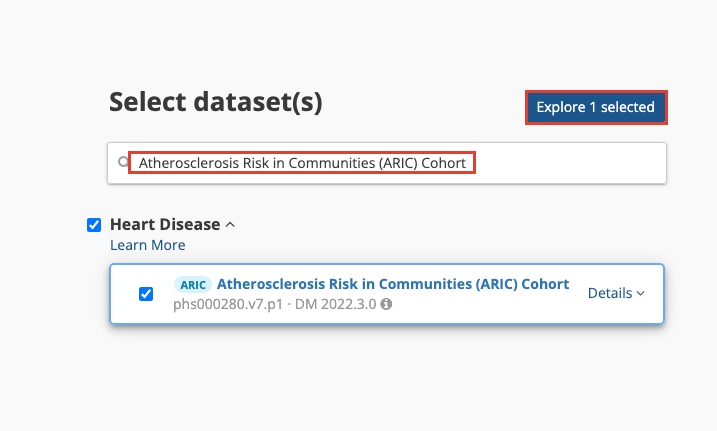
- Enter the name of the dataset that contains the variables you are interested in (available within dataset or variable details page).
- Click Explore selected. The Data Browser canvas is displayed.
- Click the File entity.
- Click the File name property to filter by the file name.
- Enter the dataset pht ID (part of the dataset name), e.g. "pht006414.v1.p1.c2".
- Select the files that are found and click Filter by.
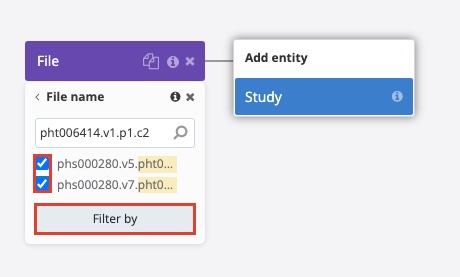
The filtered files will be displayed in the File section below.
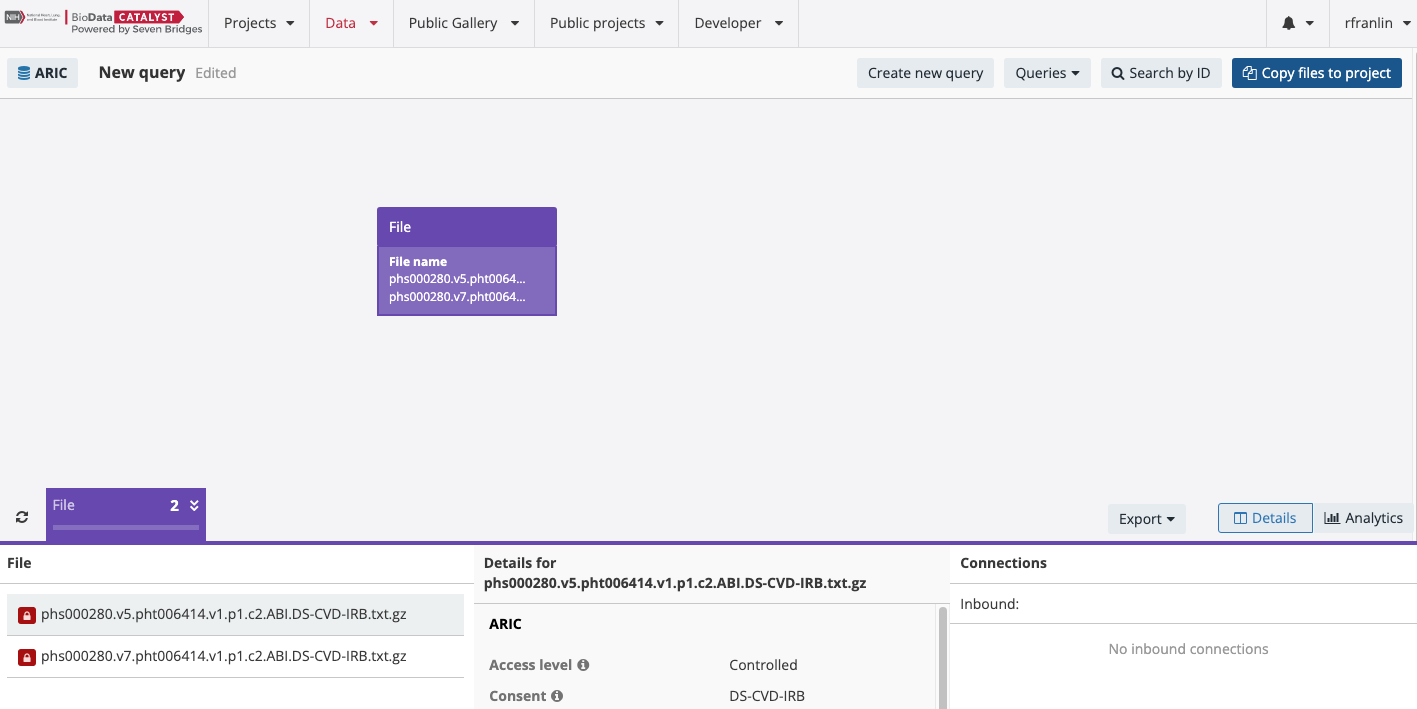
- Click Copy to project to copy the files to your project.
Once the file(s) have been copied, you can go to your project and open the file to access information about the variables.
Updated over 3 years ago
